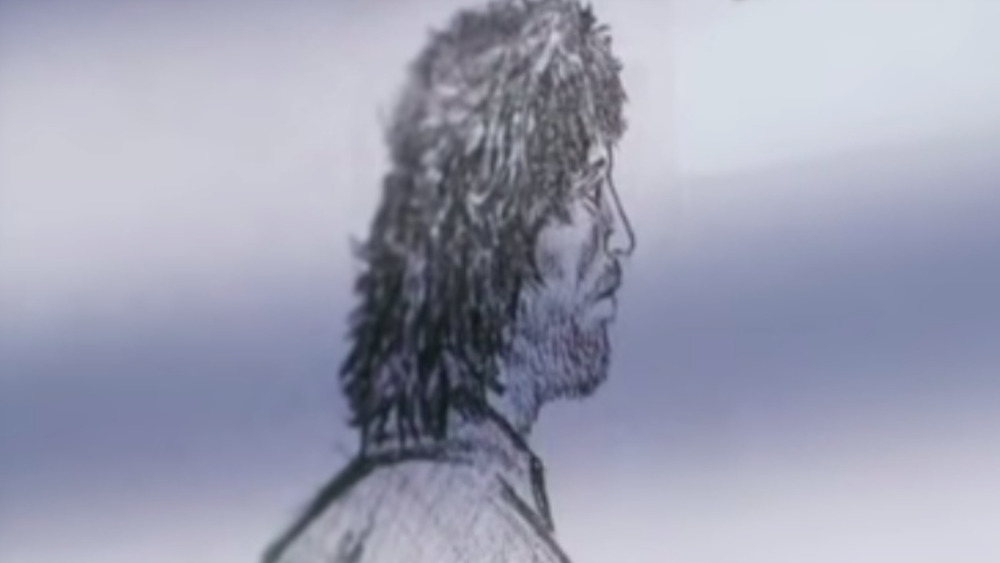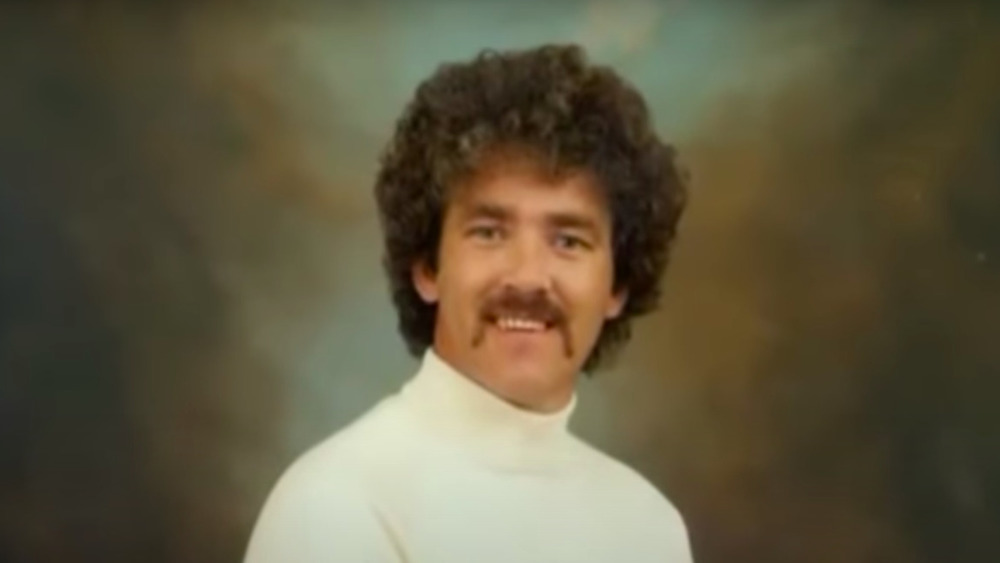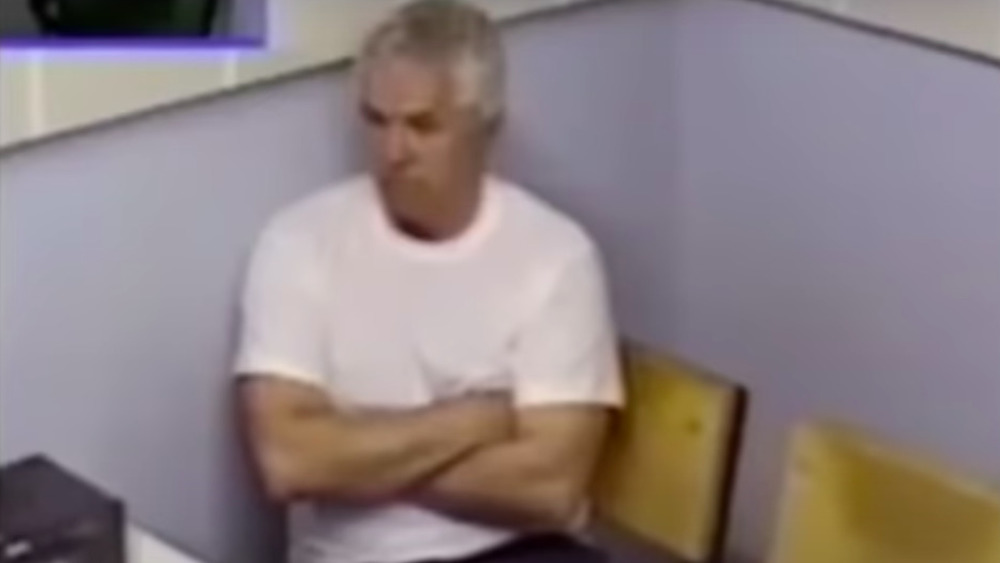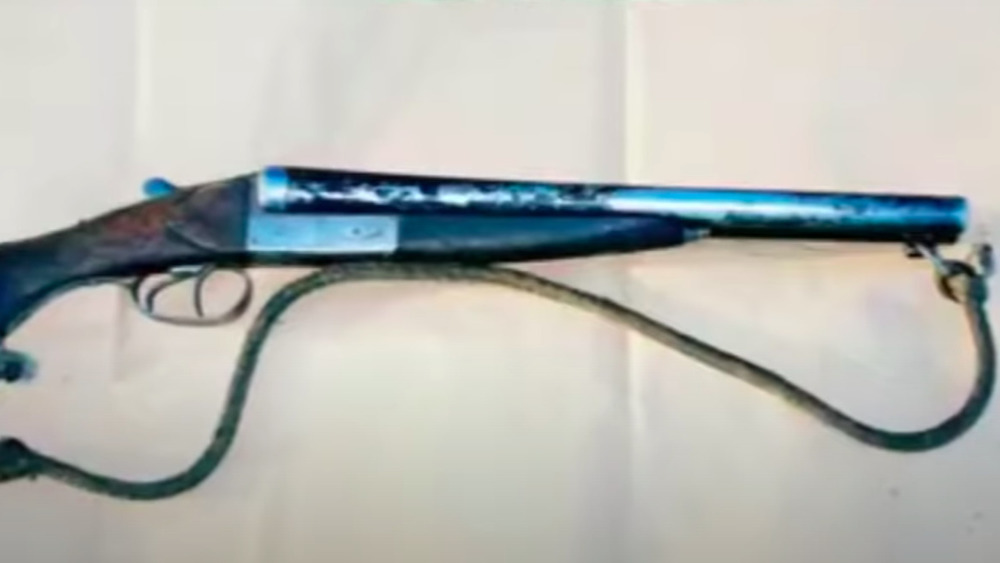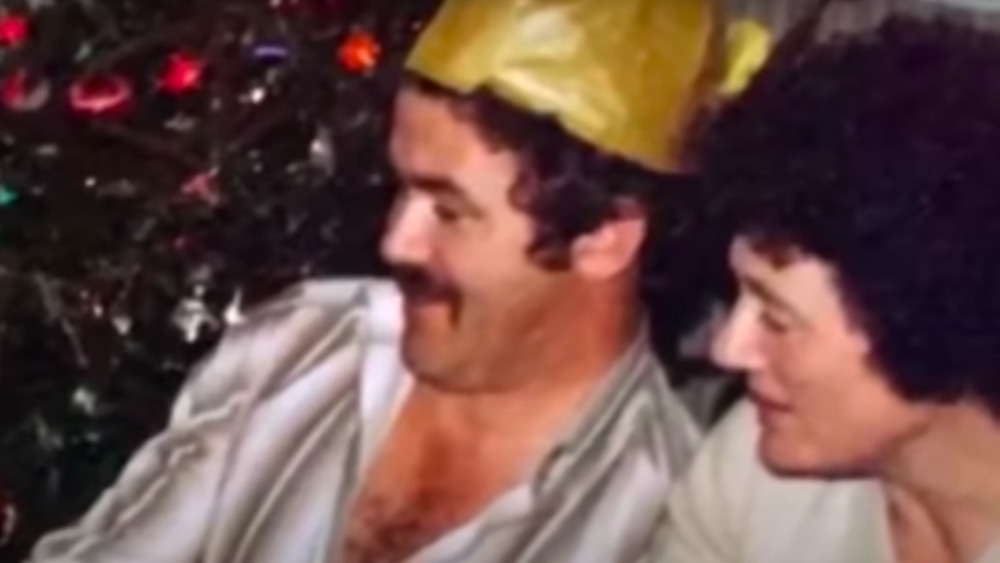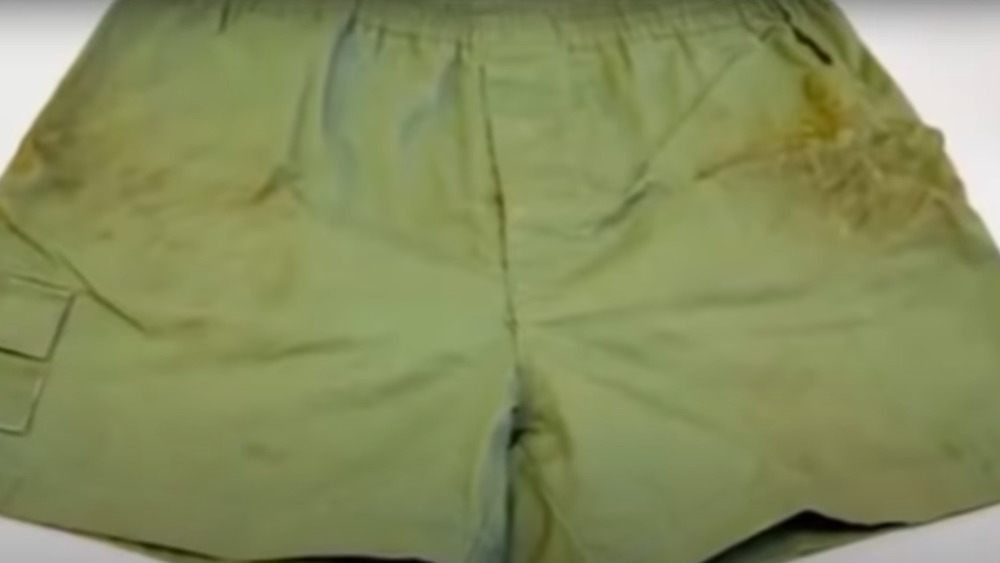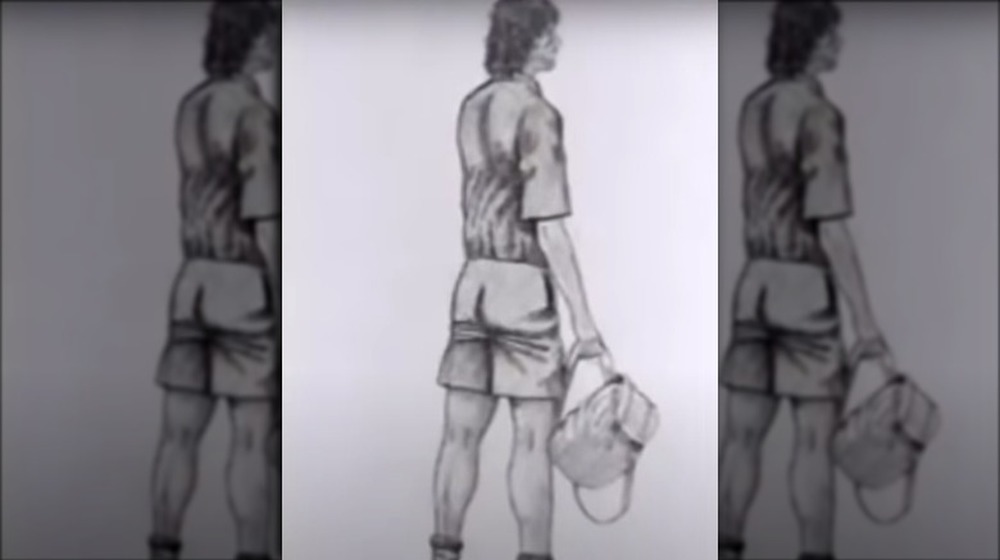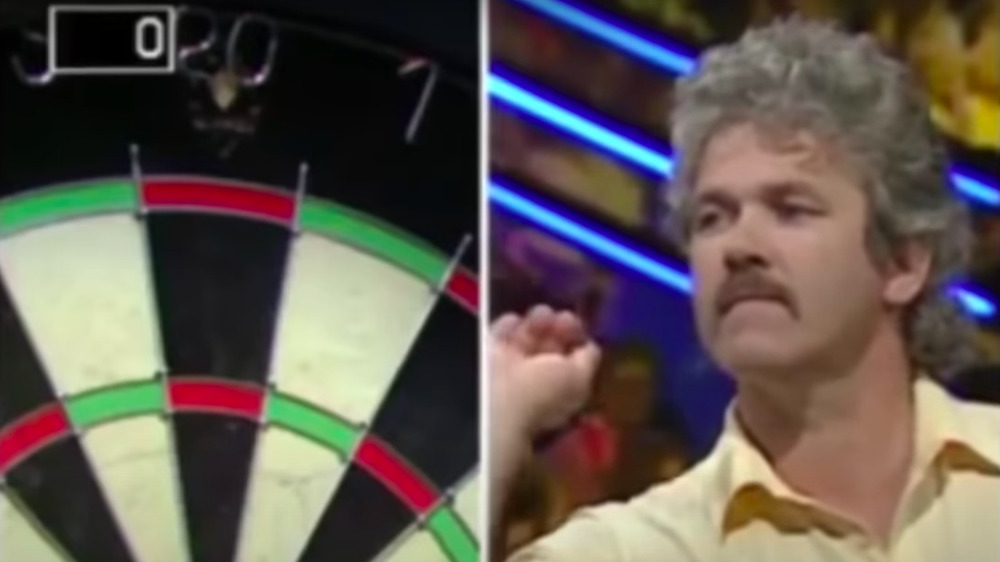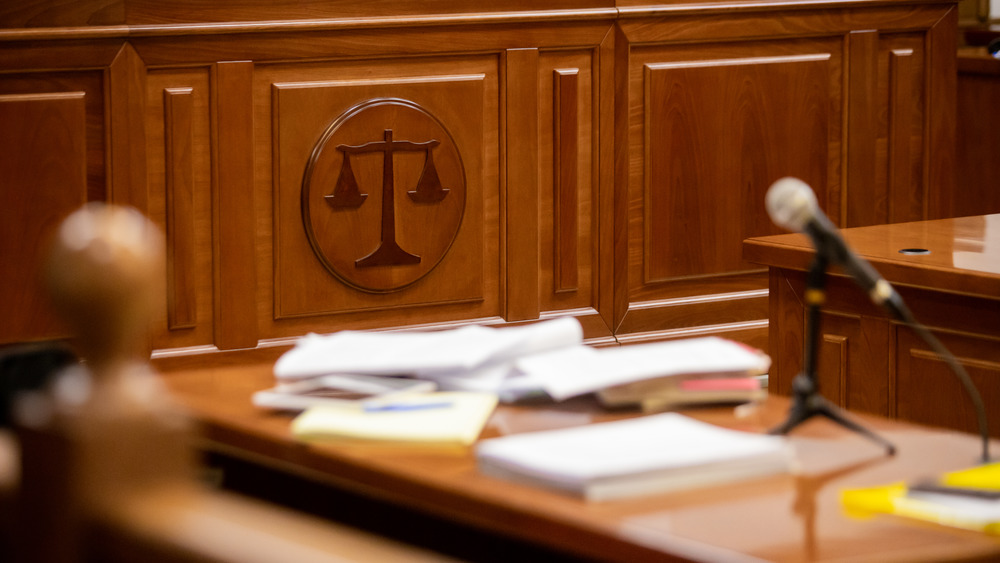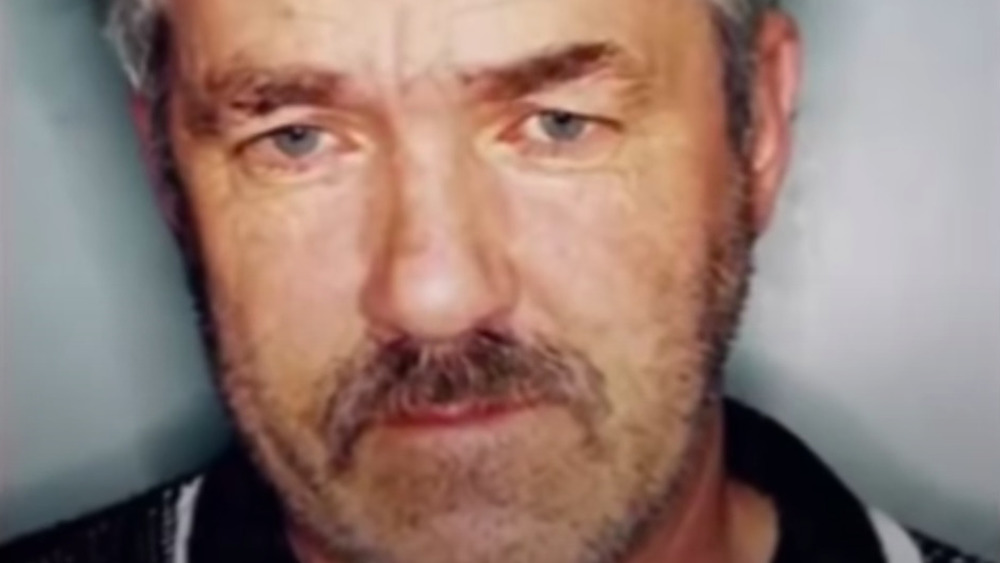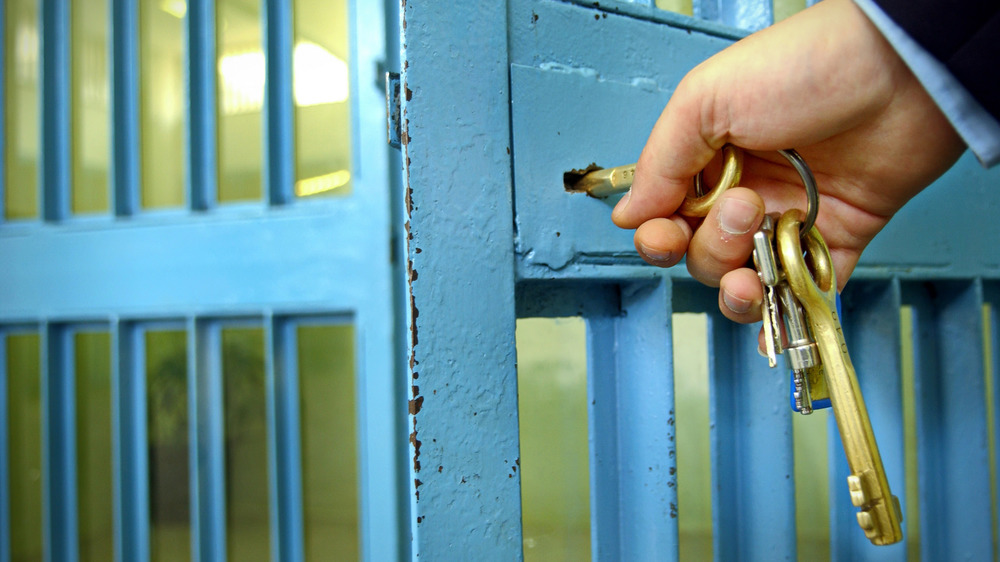The Crazy True Story Of The Pembrokeshire Murderer
It's hard to think that game shows have played a hand at catching criminals, but a serial killer's appearance on a show called Bullseye ended up helping police connect him to his murderous crimes, almost 20 years after his appearance on the show.
John Cooper's killing spree lasted throughout the 1980s and 1990s, and although police were initially able to arrest Cooper for burglary and robbery (the difference between the two being that burglary involves illegal entry into a building), it took another ten years for them to connect him to the various unsolved murders and assaults in Pembrokeshire.
Upon his conviction, Mr Justice John Griffith Williams is reported to have said that Cooper is "a very dangerous man, highly predatory who, but for advances in forensic science, may well have continued to evade capture." The BBC describes him as "one of the most notorious killers in modern Welsh history." In January 2021, ITV aired a three-part series about Cooper titled The Pembrokeshire Murders, directed by Marc Evans and written by Nick Stevens, dramatizing the criminal investigation that led to Cooper's final convictions, though the series focuses mostly on Cooper's son, Andrew. Now in his seventies, John Cooper is currently serving four life sentences, with what appears to be no possibility of ever getting out. This is the crazy true story of the Pembrokeshire murderer.
Who is John Cooper?
John William Cooper was born in Milford Haven in Pembrokeshire, Wales, on September 3, 1944. The BBC reports that after leaving school at the age of 15, Cooper worked a number of odd jobs. At 22, Cooper married a woman named Patricia, and they had two children together, Andrew and Theresa.
Although Cooper was able to land a steady job at one point, working with a welder at a Gulf oil refinery, he quit in 1978 after winning a new car and £90,000 in a Spot the Ball newspaper competition. Initially, Cooper was pleased with the win, reportedly giving £10,000 to his relatives, according to the Mirror. But before long, Cooper developed a drinking and gambling problem. According to a friend of his, "He spent most of it in pubs and bookies. I once saw him lose £1,000 on a horse — he went mental. People were scared of him and he got into a lot of fights." Heavy also writes that Cooper also "lost money on houses during several moves throughout Wales."
It's believed that the loss of all of his money is what propelled Cooper initially into burglary and robbery. The prosecution also later claimed that Cooper's "knowledge of the fields and paths around Milford Haven gave him free rein to target houses in the area."
The murder of Richard and Helen Thomas
John Cooper's first murder was the double homicide of 56-year-old Helen Thomas and her brother, 58-year-old Richard Thomas, a millionaire, on December 22, 1985. According to the BBC, the prosecution claimed that Miss Thomas most likely caught Cooper during his attempt to burgle the house, which led to her untimely death. Since Cooper "worked as a farm laborer and lived near their three-story home," according to Heavy, it's also possible that Miss Thomas recognized Cooper's voice. Mr. Thomas had also sold hay to Cooper on a number of occasions, although Cooper reportedly "often argu[ed] aggressively about the price."
Mr. Thomas wasn't home when his sister was murdered, but when he came back, Cooper murdered him as well, shooting him with his sawn-off shotgun as he'd done to Miss Thomas. Afterward, Cooper poured diesel fuel around and set fire to the Thomas' mansion farmhouse in Scoveston Park in an attempt to destroy any evidence. However, MSN reports that police were able to find pellets from Cooper's shotgun in the walls of the house as well as "the remains of a blindfold or gag lying near one of the bodies."
According to WalesOnline, police even interviewed Cooper after this murder, although the was "alibied by his terrified family." Apparently, the court described the amount of money that Cooper got from the crime as "negligible."
The murder of Peter and Gwenda Dixon
Around four years later, on June 29, 1989, John Cooper murdered 52-year-old Gwenda Dixon and her husband Peter, aged 51, a couple he encountered on a coastal walk. Originally from Oxfordshire, they had come to Pembrokeshire on vacation.
After tying the couple up and forcing them to give him their bank cards and PIN codes, Cooper shot them both a total of five times with a sawn-off shotgun. According to Murderpedia, Cooper also sexually assaulted Mrs. Dixon before murdering her. Afterward, Cooper went to multiple ATMs to withdraw money from the Dixons' accounts.
WalesOnline reports that when the Dixons were found, the scene was described as "an assassination." It's also claimed that Cooper "took time to create a screen from foliage" in an attempt to hide the bodies. Cooper also sold a wedding ring he stole from them for £25, a transaction that coincidentally occurred the same day that the Dixons' bodies "were discovered in undergrowth," writes the BBC. In the end, Cooper also stole a total of £350 from their bank accounts.
Although Cooper wasn't caught after committing this crime, surveillance footage captured him withdrawing money from an ATM "wearing khaki shorts that appeared to be women's shorts," per Heavy. With this footage, police were able to create a police sketch. However, at the time, police were unable to use the sketch to positively identify a suspect, even though, according to LADbible, they asked for the public's help on BBC's Crimewatch.
The Pembrokeshire murderer assaults five teenagers
During another robbery in 1996, a group of teenagers was held hostage by John Cooper. According to Murderpedia, five 15- and 16-year-olds were playing in a field when Cooper "confronted them, wearing a balaclava and brandishing his sawn-off shotgun." Cooper reportedly ordered the teenagers to lie facedown on the ground, threatening to kill them if they resisted, and took two of the girls out of the group in order to sexually assault them, allegedly dragging at least one of them by their hair. Heavy reports that he also had a knife, and he threatened both girls with it.
At the time that Cooper took the teenagers hostage, he was "targeting homes in that area" for burglaries, during which he often carried the sawn-off shotgun. Everyone in the group survived, but for years, the crime remained unsolved and the police had few leads to go on. The BBC reports that the unsolved nature of Cooper's murders led to a great deal of speculation, "and at one time there was a theory that the Dixons were killed because they came across a cache of IRA weapons."
However, according to prosecuting barrister Gerard Elias QC, all of the crimes were linked by the fact that each one involved "shotgun, ropes, and a balaclava, and they all occurred in a small part of Pembrokeshire." This was also a common thread between the many burglaries and robberies that Cooper committed during a ten-year period.
The armed robbery in Sardis
In 1997, another woman was taken hostage and held at gunpoint by John Cooper in her home in the village of Sardis in Pembrokeshire. However, according to the Independent, despite being bound and gagged like Cooper's other victims, this woman managed to flee. This is the crime that finally led to police arresting Cooper in connection with a series of home invasions in 1998.
During the raid on Cooper's home, police found "jewellery [sic], silverware and photo frames, some still bearing the photos of his victims." According to Murderpedia, Cooper was charged and convicted for 30 burglaries and robberies, but although many people, including the police, believed that he was also responsible for several murders, at the time, there was "insufficient evidence" with which to indict him. However, Cooper was sentenced to 16 years in prison for the burglaries and robberies.
In 2006, while Cooper was still in jail, Detective Superintendent Steve Wilkins began to dig into the unsolved Pembrokeshire murders, LADbible reports. Wilkins had worked previously with the Dyfed-Powys police but had spent the past two years working with the National Criminal Intelligence Service. With his newfound experience, Wilkins began working with the Dyfed-Powys police once more. The investigation into the unsolved murders would take a few years, but before long, their case started coming together.
Operation Ottawa
In February 2006, Operation Ottawa was created with the intention to review "material from outstanding undetected serious crime in Pembrokeshir [sic]." According to LADbible, Steve Wilkins used advancements in DNA profiling techniques in order to build up enough evidence with which to charge John Cooper.
Cooper's shotgun, which police had discovered buried in a plastic tube two feet underground, was found to have the Dixons' blood on it. But the real breakthrough came with a pair of shorts that had been found in Cooper's bedroom during his 1998 arrest, which, according to Heavy, implicated Cooper thanks to his wife Patricia. Patricia died in 2009, but before Cooper's 1998 arrest, while altering a pair of shorts she believed belong to Cooper, "she accidentally sealed some of the victim's blood in the hem, which was later used as DNA evidence in the case."
Wilkins claimed, "It's absolutely incredible to think Pat's simple act would lead to him finally facing justice."
Evidence mounts against John Cooper
The shorts also revealed traces of DNA from Dixon's daughter. However, since she was in Cyprus during the murders, there was no way that her DNA could've gotten onto the shorts "unless they actually belonged to the Dixons," according to Steve Wilkins, as quoted by the Mirror. The Independent also reports that one of Richard Thomas' socks was found in John Cooper's house. This sock, along with several other items, was found "squirreled away in the hedgerows near [Cooper's] house at 34 St Mary's Park." Cooper, it seemed, had been keeping trophies from his victims.
The shorts also looked similar to the ones worn by the man in the police sketch drawn from the Dixon murders. And soon, police made another breakthrough, with the discovery that Cooper had appeared on the game show Bullseye in May 1989, "exactly a month before the Dixon murders."
Wilkins found out about the appearance completely at random, having been tipped off by the owner of a pub Cooper frequented. But this tip ended up being one of the luckiest breaks of the case. With it, police were able to tie Cooper to the police sketch made after the Dixons' murder.
The Pembrokeshire murderer's appearance on Bullseye
The discovery of John Cooper's televised appearance was phenomenally lucky. Since Cooper had any and all photographs of himself taken during the 1980s, police had "nothing to compare with the sketch of the killer drawn from witness testimony," according to Radio Times. But now, knowing that footage of Cooper existed, and of him just one month before the Dixons' murder, they finally had something to compare. And after finding the footage, "they were able to see that Cooper was a very close match to the suspect sketch."
According to Heavy, Cooper didn't last long on the show and was kicked off after the first round for failing to correctly answer enough questions. He also failed to successfully throw his darts on-target. However, while he was chatting with host Jim Bowen on the show, "Cooper talked at length about the geography of the West Wales countryside and showed he had intimate knowledge of the area where the couple had been killed," MSN reports. As a result, police were entirely convinced that Cooper was responsible for the Dixons' murder. During their banter, Cooper even laughingly told Bowen that he had a "strange hobby," although he claimed it was scuba diving.
Cooper was released from prison for his first conviction in 2009, but just a few months later, on May 13, he was arrested once more and charged with "the killing of the Thomases, the Dixons, and the attack on the teenagers at the Mount Estate."
The testimony of John Cooper's son
During his second trial in 2011, John Cooper tried to blame his son, Andrew Cooper, for the murders. According to Woman & Home, throughout the trial, "Cooper made several attempts to cast aspersions onto his own son." Andrew, meanwhile, testified against his father and asserted that Cooper would frequently take "long walks at night with a concealed shotgun under his jacket."
According to Heavy, Cooper was also incredibly abusive toward his son as well. He repeatedly threw Andrew against the wall "for minor offenses" and even threatened the boy with a gun when he was 11 years old. Cooper was also reportedly abusive toward his wife Patricia as well. Gareth Rees, a detective who was working the case, also said that "when [Cooper's] children were smaller they reared some chicks and he shot them with a shotgun in front of them." Andrew also stated that Cooper was "fascinated by survival programmes on television and even kept a copy of the SAS handbook," per the BBC.
MSN also reports that during the trial, Andrew testified that Cooper kept photographs of people that Andrew didn't recognize, in addition to things that "looked like other peoples' possessions." Apparently, Cooper would also have regular bonfires in his backyard, during which he would burn the jewelry he'd stolen "as a means of identifying any valuable stones and metal he had stolen."
After the trial, Andrew changed his name from the one given to him by his father.
John Cooper is reimprisoned
As John Cooper was led into his second trial, he yelled at the press, "You must judge me after the trial and not before." In British Serial Killers, Nigel Wier writes that Cooper maintained his innocence throughout, pleading not guilty to all the charges. The trial lasted eight weeks, beginning in March 2011.
At one point during the trial, while Mr Justice John Griffith Williams, the trial judge, was describing how frightened Cooper's victims must have been, Cooper interjected with, "This is utter rubbish, it's rubbish. That jury's been on the internet. I don't blame them — evidence has been kept from that jury." Admonishing Cooper for his outburst, Justice Williams said that Cooper would be taken out of court if he didn't remain silent.
On May 26, 2011, Cooper was convicted on all charges and given four life sentences, according to The Guardian. Justice Williams said to Cooper, "Only you know the full facts and circumstances of the four murders, much will never be known because you have constantly refused to stand up to your responsibilities. No doubt you will continue to deny what you have done and not show any remorse."
During Cooper's sentencing, Justice Williams stated that "life will mean life" after announcing the four life sentences. But Cooper wasn't ready to give up yet.
One last appeal
Although John Cooper appealed his conviction in September 2011, the courts rejected his appeal in November 2012, per the BBC. The Lord Chief Justice said as the appeal was thrown out that "the jury no doubt considered his [Cooper's] evidence carefully before deciding his guilt was proved."
North Wales Live reports that by this point, Cooper had been diagnosed as a psychopath. Gerard Elias QC, the prosecuting barrister during the 2011 trial, claims that, "[There was a] cold controlled evil that I saw in Cooper that I don't think I've seen in anyone else I've been involved with."
Overall, the entire reinvestigation of the murders took almost six years, and as of 2021, Cooper remains imprisoned, although his exact location remains undisclosed. For Steve Wilkins, the reinvestigation was absolutely vital because Cooper was coming up on parole. Since "it was clear to [Wilkins] that whoever committed these offences enjoyed what they were doing," it was essential that the perpetrator remained in prison.
